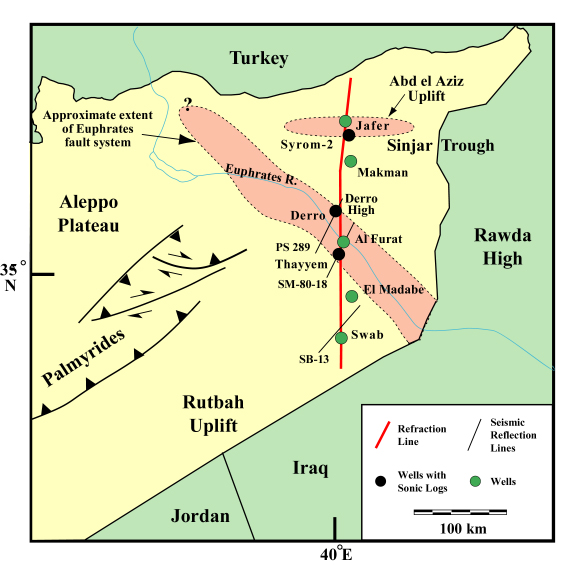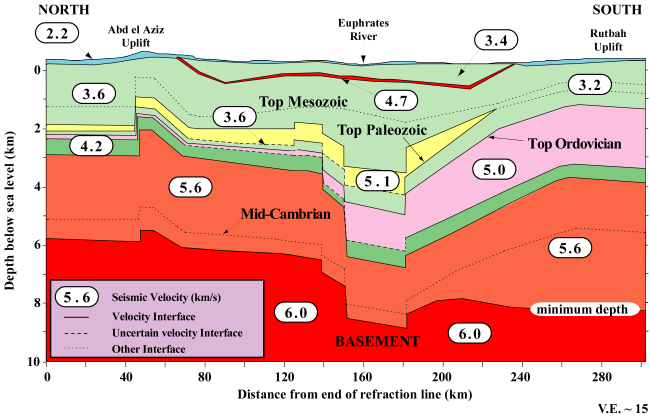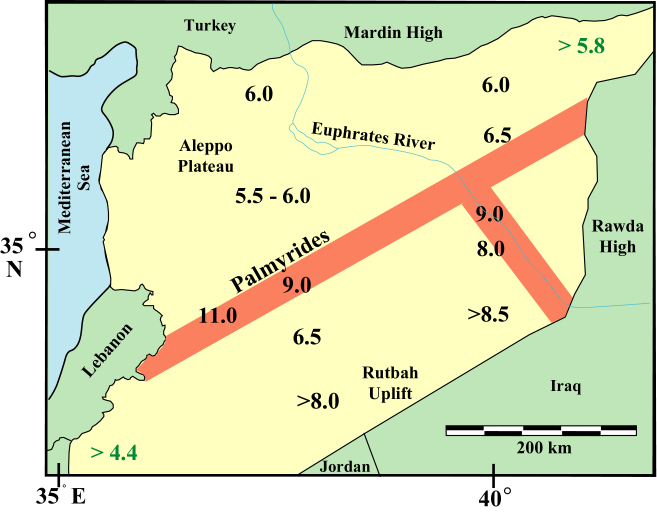Home | Results Summary | Publications | Participants | M.East / N.Africa Home
![]()
Basement depth in the Arabian plate beneath eastern Syria is found to be much deeper than previously supposed. Deep-seated faulting in the Euphrates graben system is also documented. Data from a detailed, 300 km long, reversed refraction profile, with offsets up to 54 km, are analyzed and interpreted, yielding a velocity model for the upper ~ 9 km of continental crust. The interpretation integrates the refraction data with seismic reflection profiles, well logs and potential field data, such that the results are consistent with all available information. A model of sedimentary thicknesses and seismic velocities throughout the region is established. Basement depth on the north side of the Euphrates is interpreted to be around 6 km, whilst south of the Euphrates basement depth is at least 8.5 km. Consequently, the potentially hydrocarbon-rich pre-Mesozoic section is shown, in places, to be at least 7 km thick. The dramatic difference in basement depth on adjacent sides of the Euphrates graben system might suggest that the Euphrates is a suture zone, possibly inherited from Late Proterozoic accretion of the Arabian plate. Gravity modeling across the southeast Euphrates system tends to support this hypothesis. Incorporation of previous results allows us to speculate on the position of possible suture zones in Syria.
Key Figures and Captions
Figure 1: Location of refraction data in eastern Syria.

Figure 2: Results of the refraction interpretation.

Figure 3: Basement depth (in km) in Syria determined from refraction interpretation and well data (green numbers).

Go
back to Summary of Results
Go back to
Cornell Syria Project Welcome Page